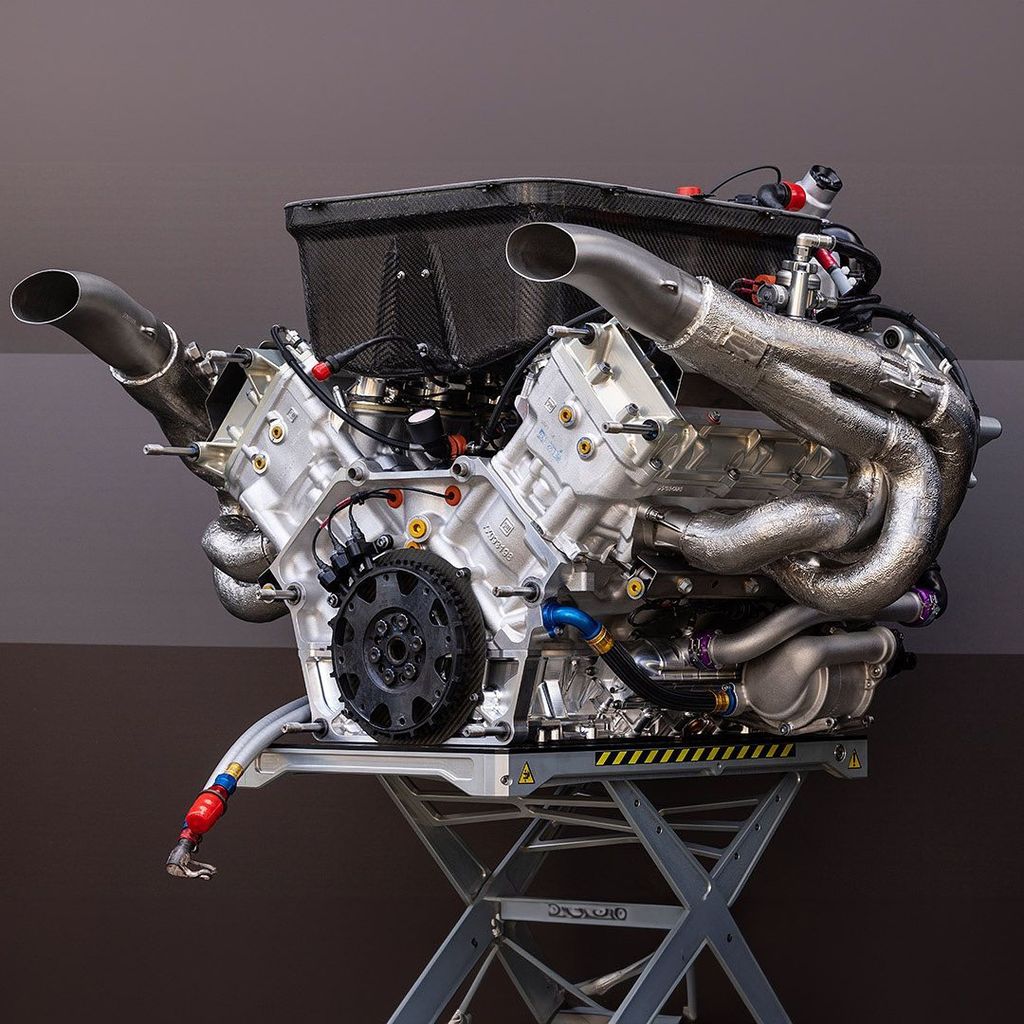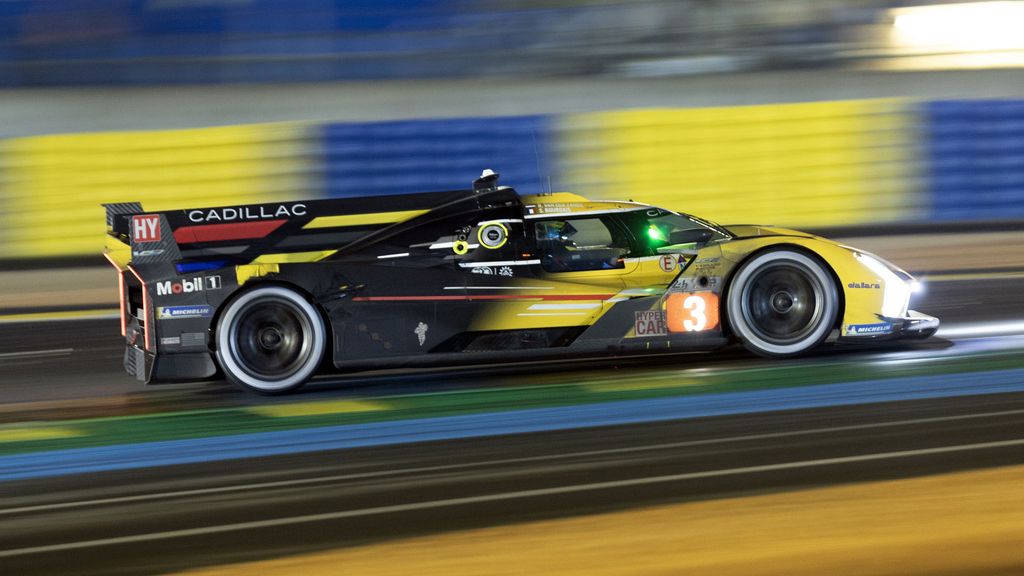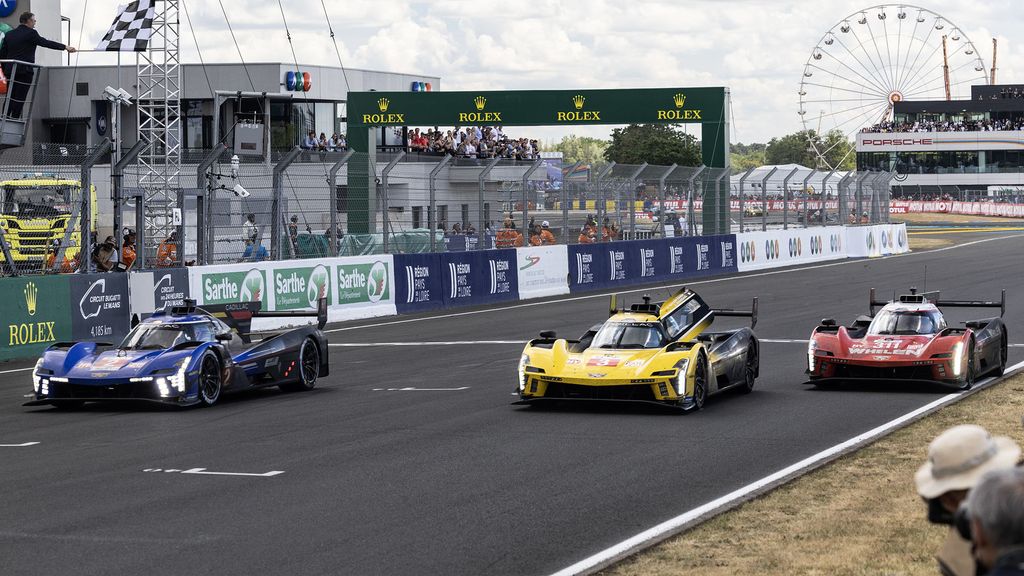Bump starting a car is usually an act of desperation. But in the fastest prototype race cars on earth, there’s nothing desperate about it. Today’s IMSA GTP machines, also known as LMDh cars, are some of the most hardcore hybrids out there. From a stop in pit lane, GTP cars accelerate entirely on battery power, leaving only the sound of whining electric motors in their wake. While still at pit-lane speeds, the cars dump the clutch connected to their internal-combustion engine. It fires with a roar, and the car takes off down the track.
“The execution of it, we had not previously raced with that,” Russ O’Blenes, General Motors’ director of motorsports propulsion and performance, told Motor1.
He understood how the handoff between electric and internal combustion would work conceptually, of course. But the practicality and durability of such a system was unknown; No race cars before had attempted it. Not even Formula 1 cars, which are also hybrids.
GM is trying to bump start its open-wheel project as we speak. It plans to build an F1 power unit, hybrid system and all, for the 2028 season. Work is already underway. Learning the company would construct such a powertrain was “not surprising,” to O’Blenes.
“If you look at what we’ve done in racing, this was kind of the natural next step. For me, anyway. My whole entire life has been about engines, specifically in racing,” he said.
O’Blenes sees the automaker’s GTP program as a stop along the journey toward competing at the highest level of motorsport. There are many parallels between competing in IMSA GTP and F1, however the two series are also extremely different.
Comparing F1’s ruleset to LMDh’s, O’Blenes said “The rules in Formula 1 are quite a bit more… I don’t want to say restrictive, but prescriptive is probably the better term.”
In a nutshell, the team’s entry won’t be running a big cross-plane V-8.
For the GTP cars, IMSA provides a common hybrid system, known as the Energy Recovery System (ERS) for the GTP class, which is made by Williams. In terms of regulation, there’s a power curve the drivetrain must adhere to in order to maintain close competition, but how the teams achieve that curve is almost completely up to them.

General Motors’ LMC55R V8, the only naturally-aspirated cross-plane V8 LMDh engine.
“The rules for LMDh, they’re very open,” O’Blenes said.
The ERS system’s battery may be charged during pit stops and teams are mostly free to decide when the system recovers energy from the wheels. In other words, there’s typically plenty of power available to the ERS, and it’s all fuel saved. Efficiency is vital in endurance racing, and for this reason, most teams bump start at almost every pitstop.
Competitors aren’t just using this energy to save fuel, though. Despite no changes to the LMDh rulebook, Cadillac’s hybrid prototypes are around two seconds faster around Daytona compared to their debut year. The car’s drivetrain hasn’t changed much if at all physically.
“How you use the hybrid and the energy you have to help you with both efficiency and on-track performance was a big part of the gains,” O’Blenes told me.
To this end, teams can opt to bump start however they want. It can be an automated process or not. So long as the pitlane speed limit isn’t exceeded, IMSA doesn’t care. O’Blenes didn’t go into much detail there because, naturally, that’s somewhere the Cadillac team tries to get the upper hand.

All of this talk of electric power and efficiency is relevant for GM, especially now, O’Blenes said. Not only in terms of the company’s massive electrification push, but also for its future F1 effort. The powertrain engineer did not seem phased in the slightest at Formula 1 Management’s rejection of Andretti-Cadillac’s bid to enter the F1 paddock in 2025. It seems that GM will continue developing its power unit, and O’Blenes sees it all as a huge opportunity despite the politics.
He also thinks the effort matches up with the company’s mission, even while it’s pushing for an electric future. “The way the [F1] rules are written, it really drives you [to pursue] efficiency, efficiency, efficiency. Which is exactly what we’re doing with every production vehicle that we’re looking at.”
Short of the company mission, though, O’Blenes clearly has personal skin in the game, as does much of his team.
“When I was 13, my dad would drive my car to New England Dragway because I didn’t have my license. I would race it and he would drive me home. A large amount of people that we have in here have that same amount of passion.”

O’Blenes, who has spent more than 30 years developing engines at GM, understands the challenge of F1. He sees GM’s potential entry not as intimidating, but as a test of the organization he’s helped create.
“We’ve built a very strong team of engineers and technicians that are totally driven to learn and to win.”
It all makes F1 management’s excuses for denying the Cadillac-Andretti bid seem all the more perplexing. They range from not enough physical space in the paddock–where Brad Pitt films his new racing movie seemingly every weekend–to the puzzling idea that the Andretti name isn’t well-known.
Whatever the case, it’s a shame. The would-be Andretti-Cadillac F1 outfit already has a car in the wind tunnel, and it’s clear the Detroit automaker’s involvement is anything but a branding exercise. If its experience in the LMDh class is anything to base a potential F1 bid on (winning the IMSA championship and a Le Mans podium in its debut year), it should perform well. Without a team on the grid, though, GM’s efforts will come to nothing.
Image Credit: General Motors
Read the full article here


